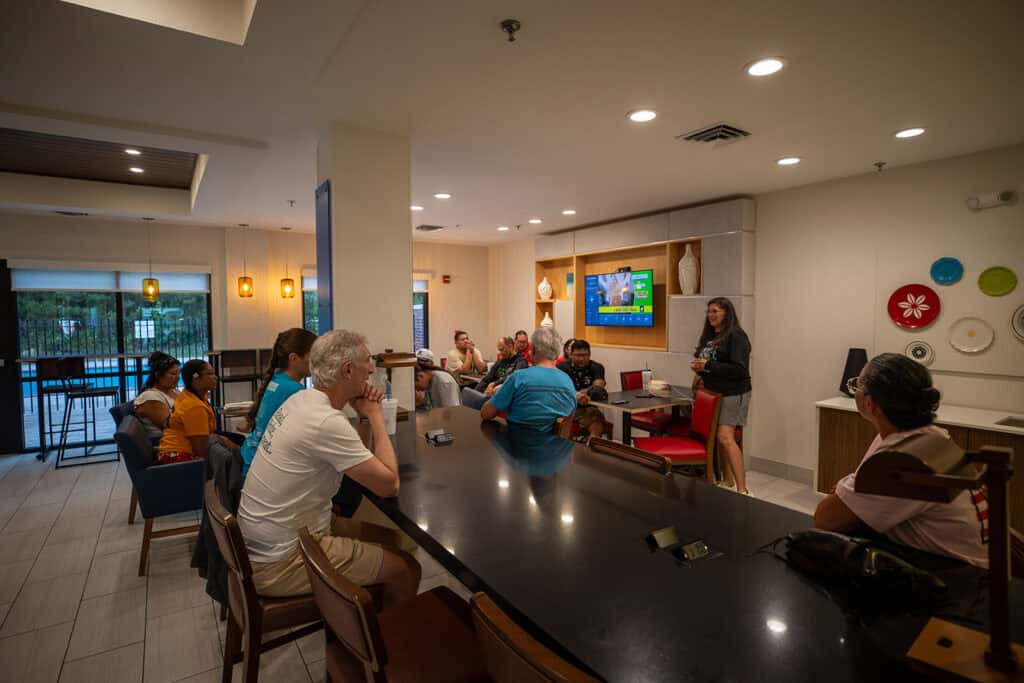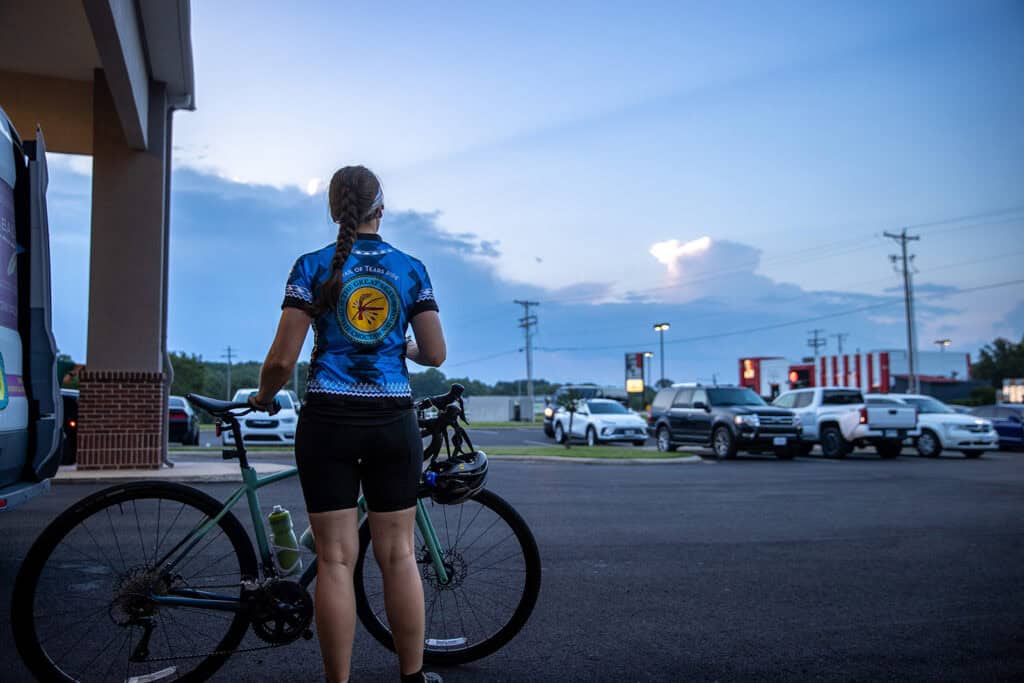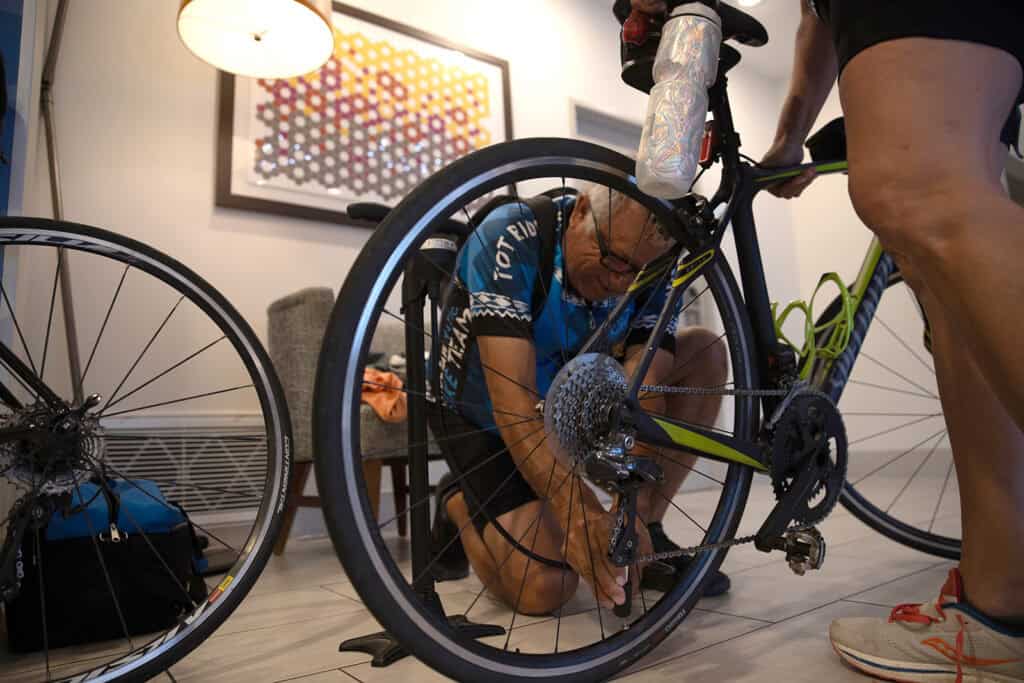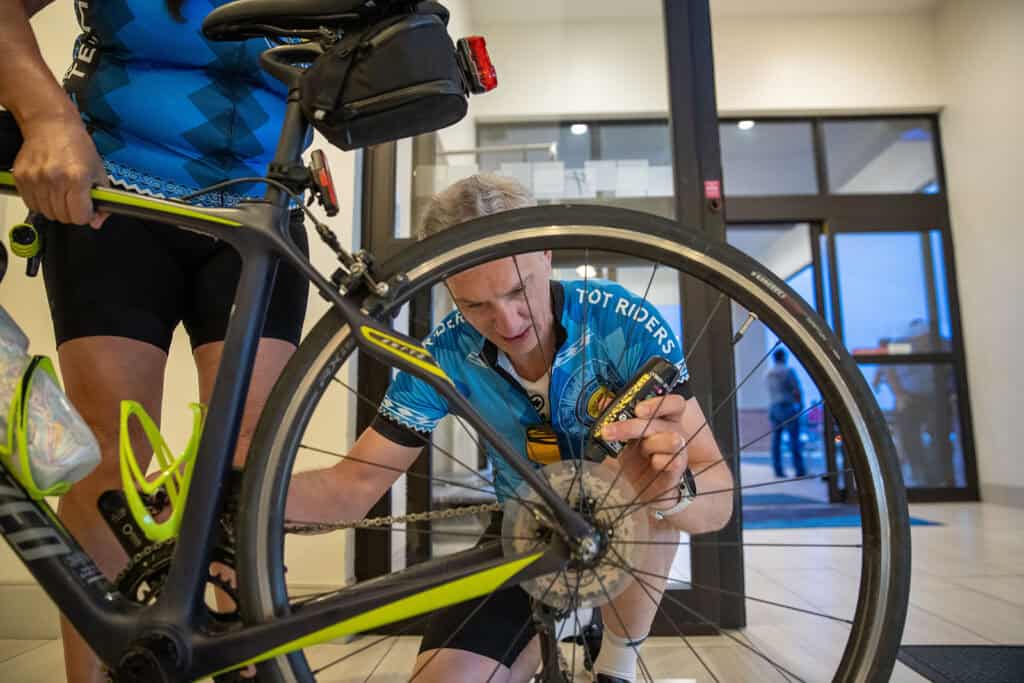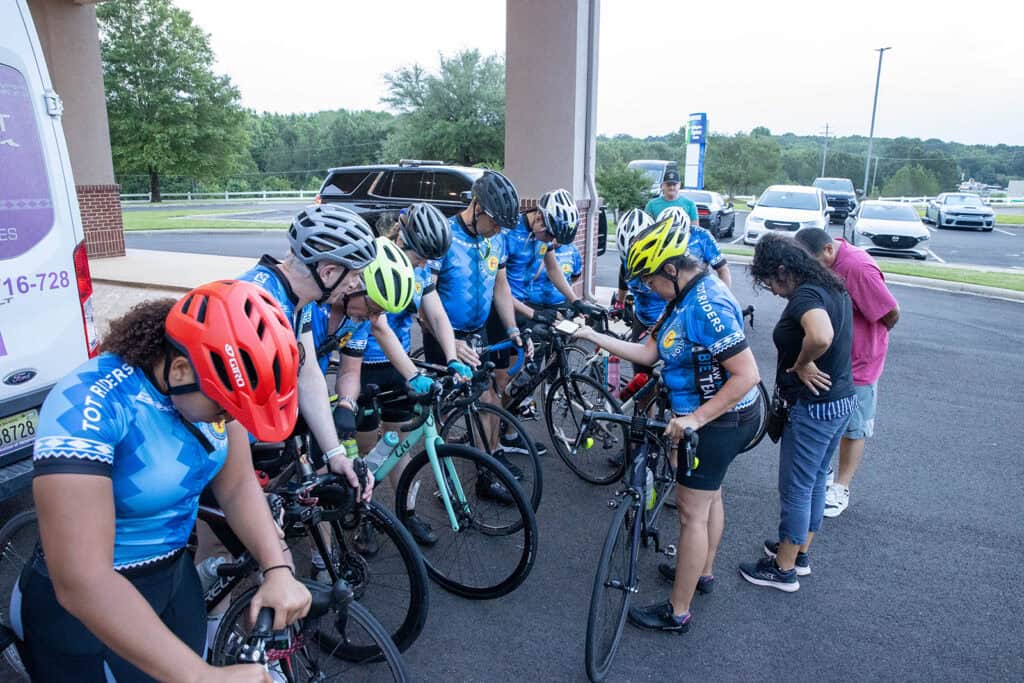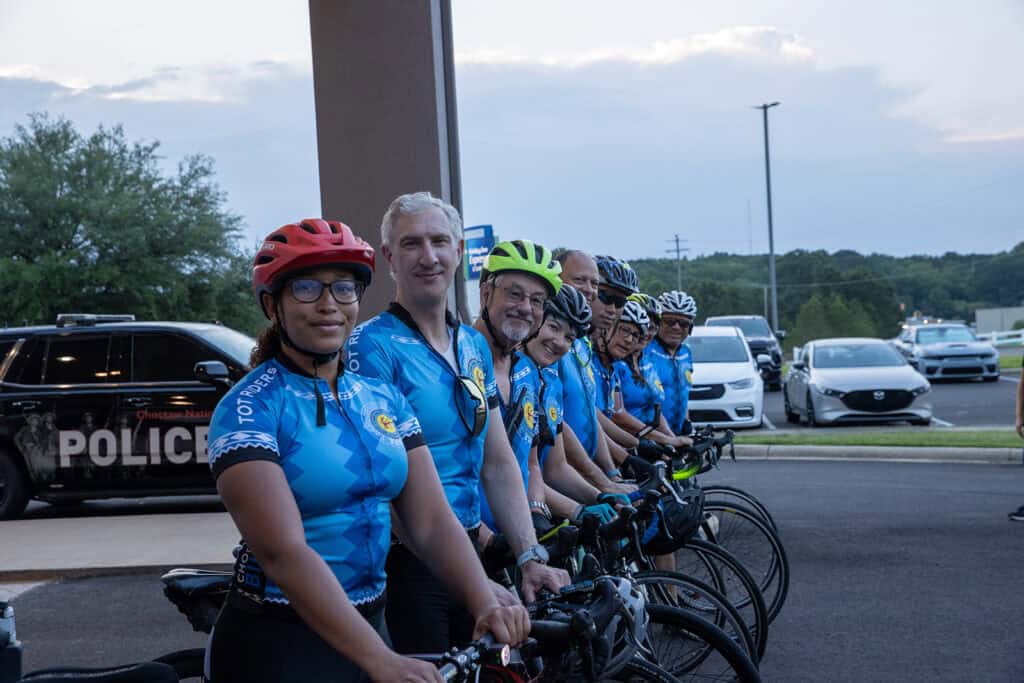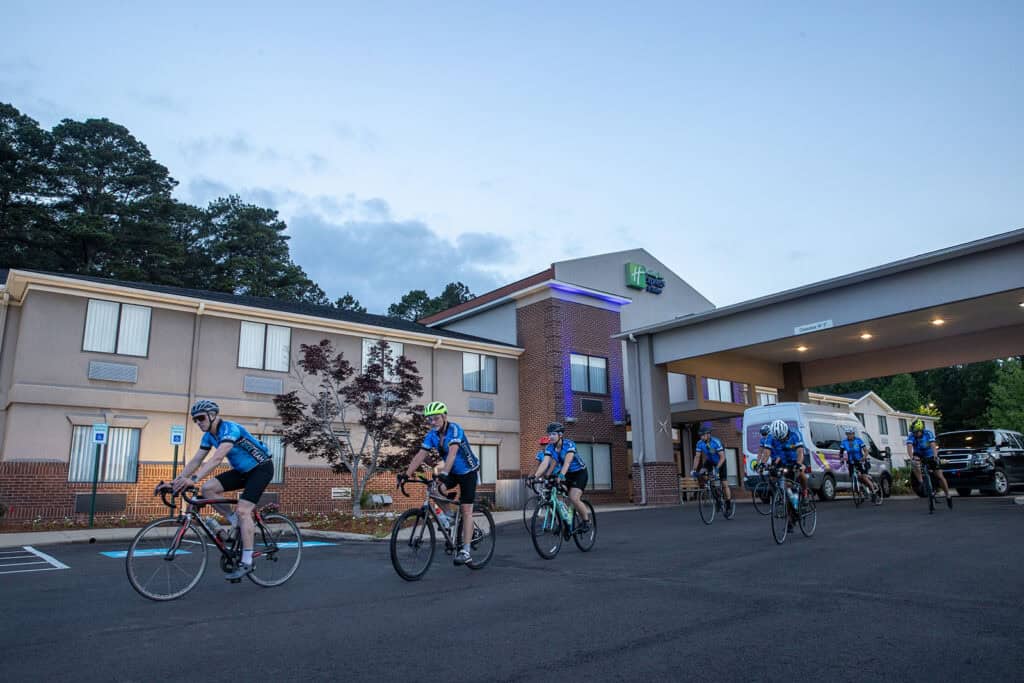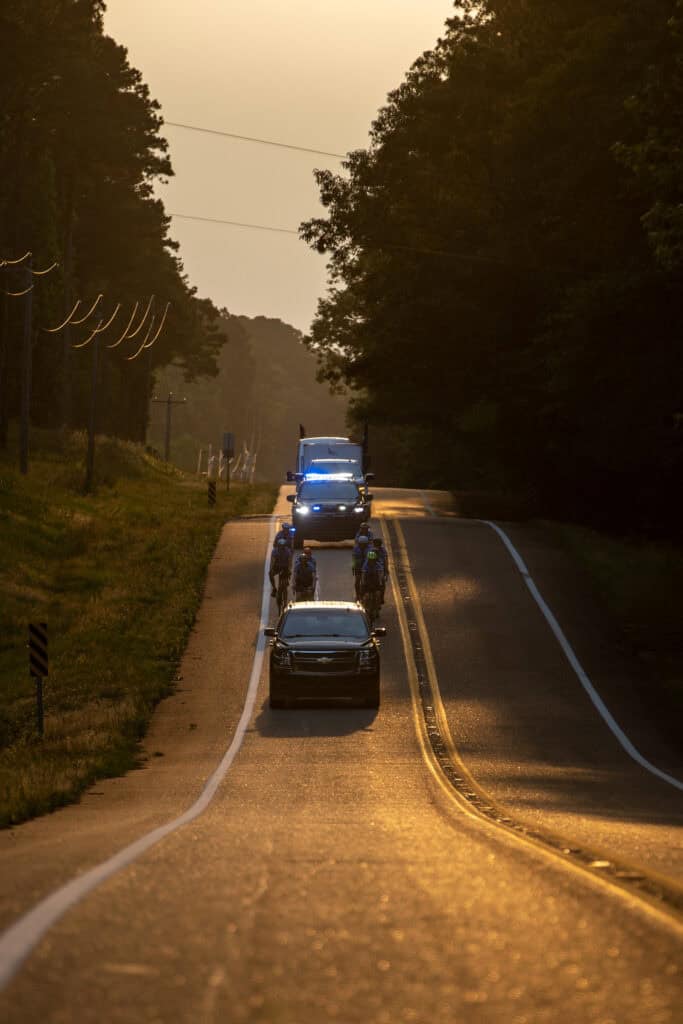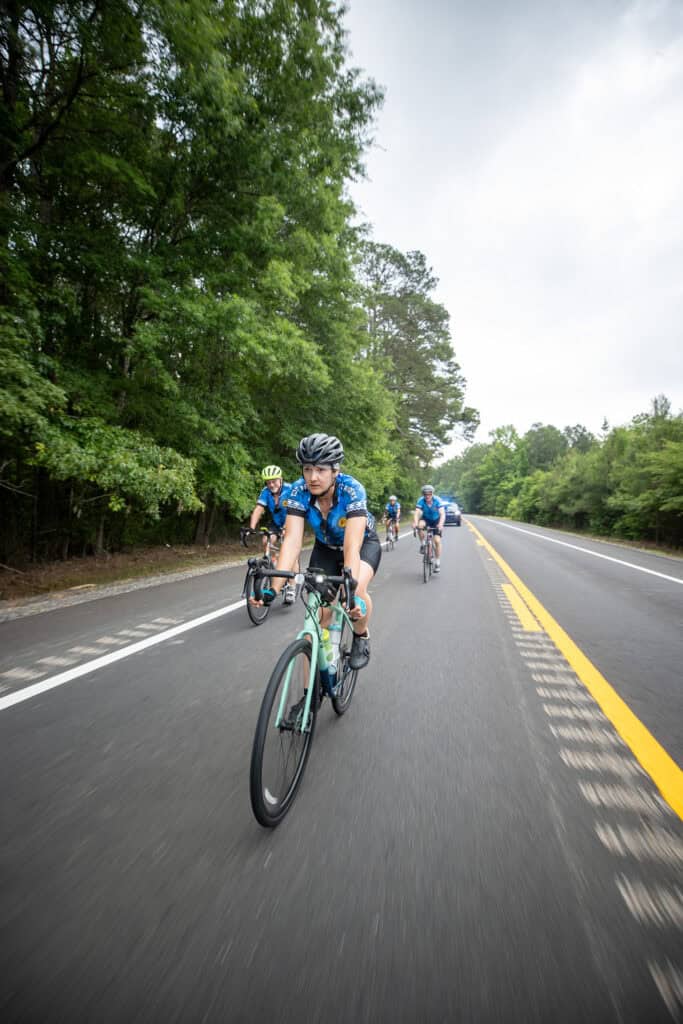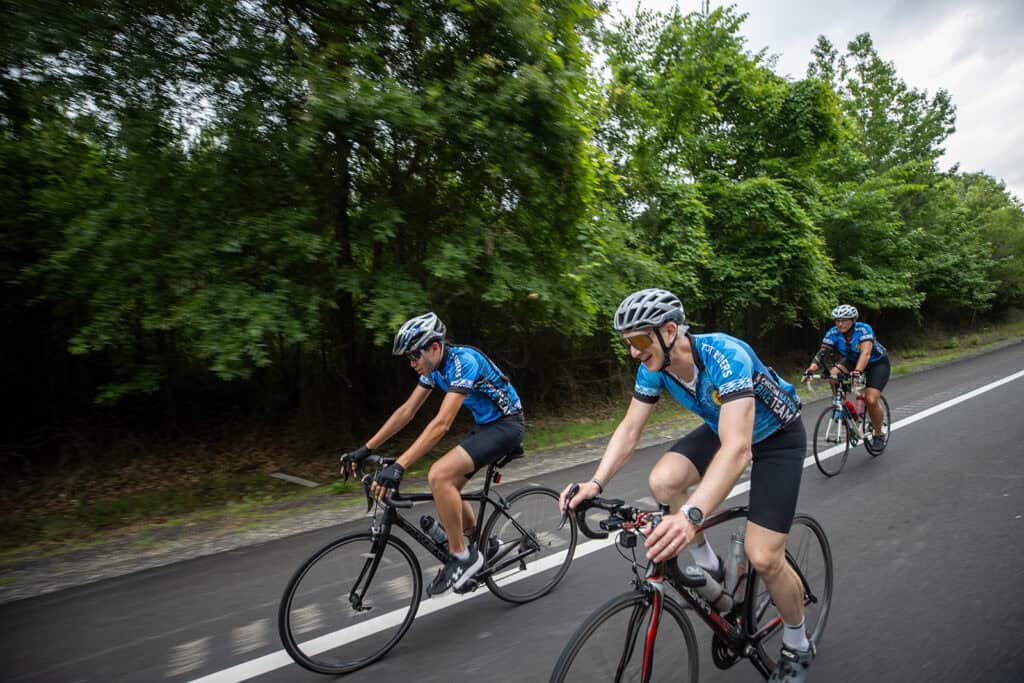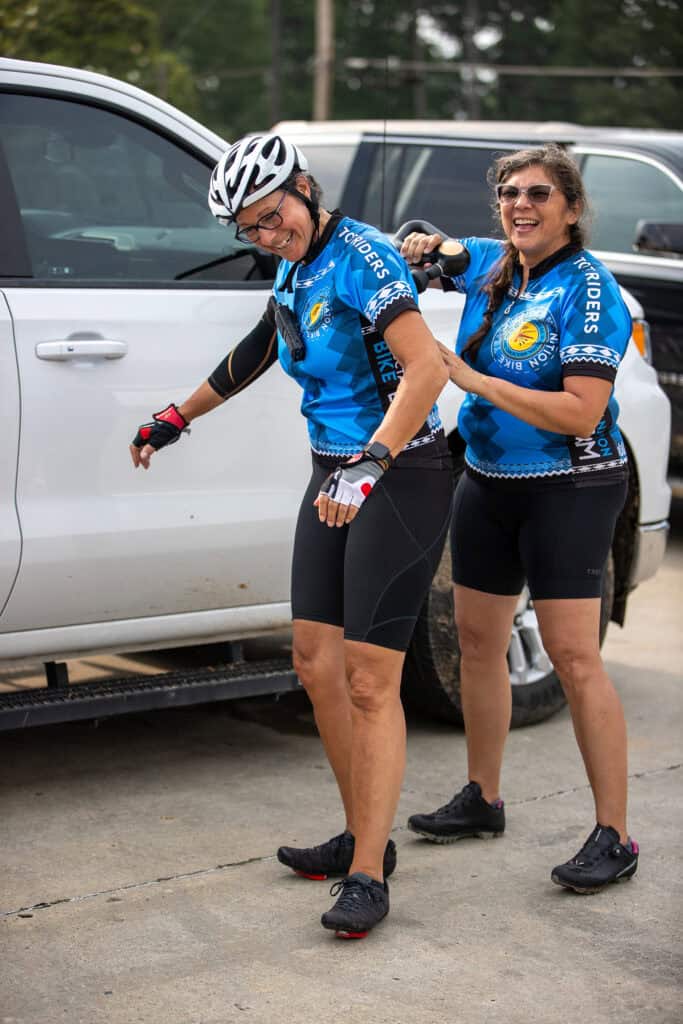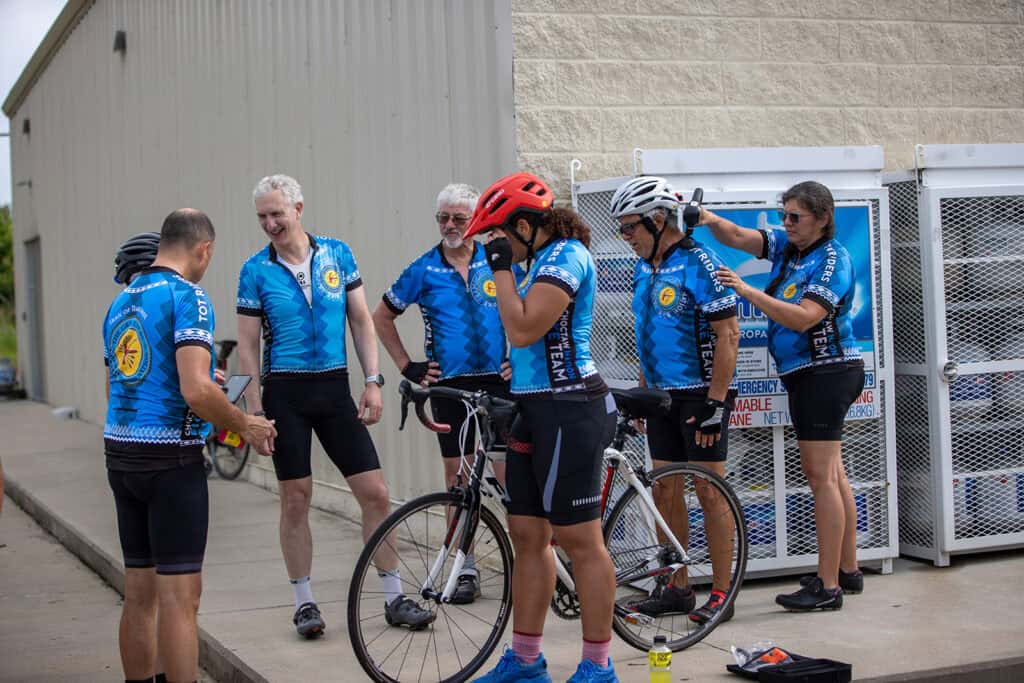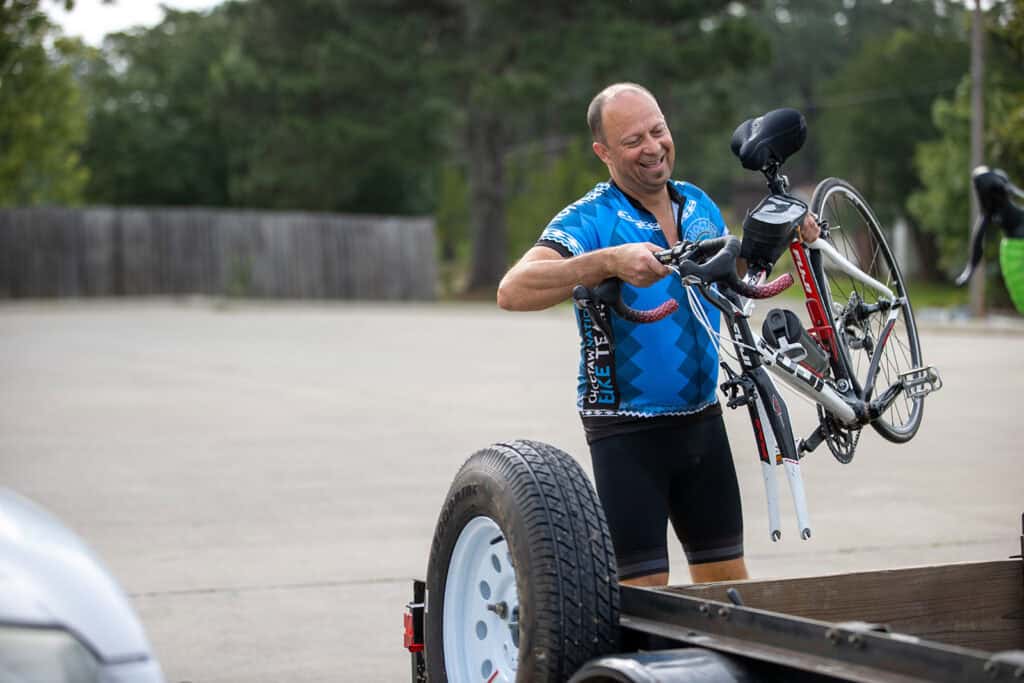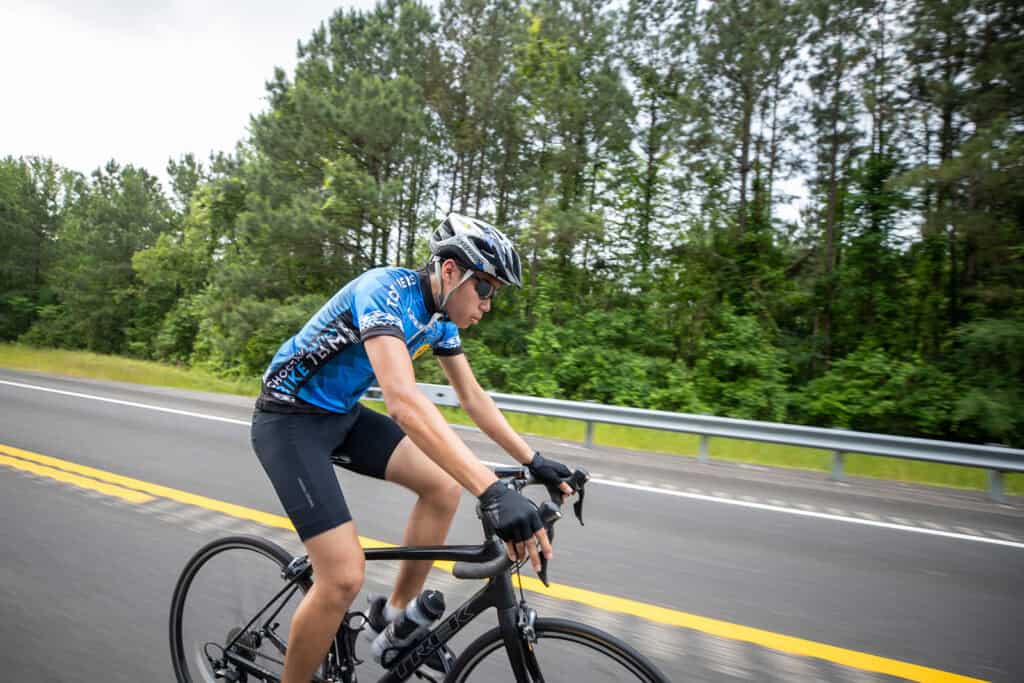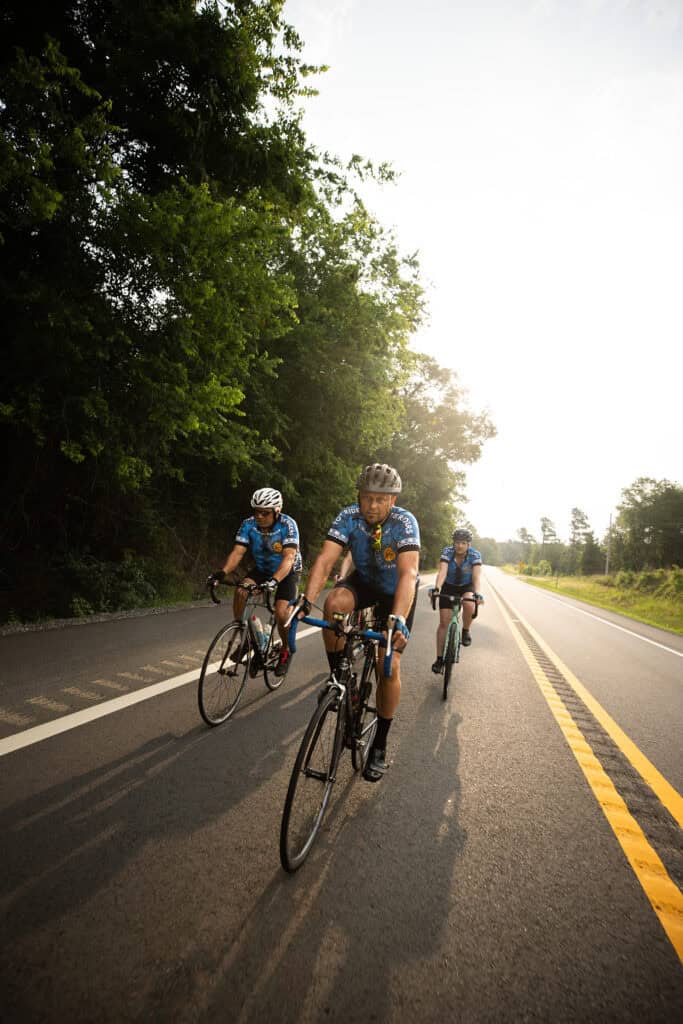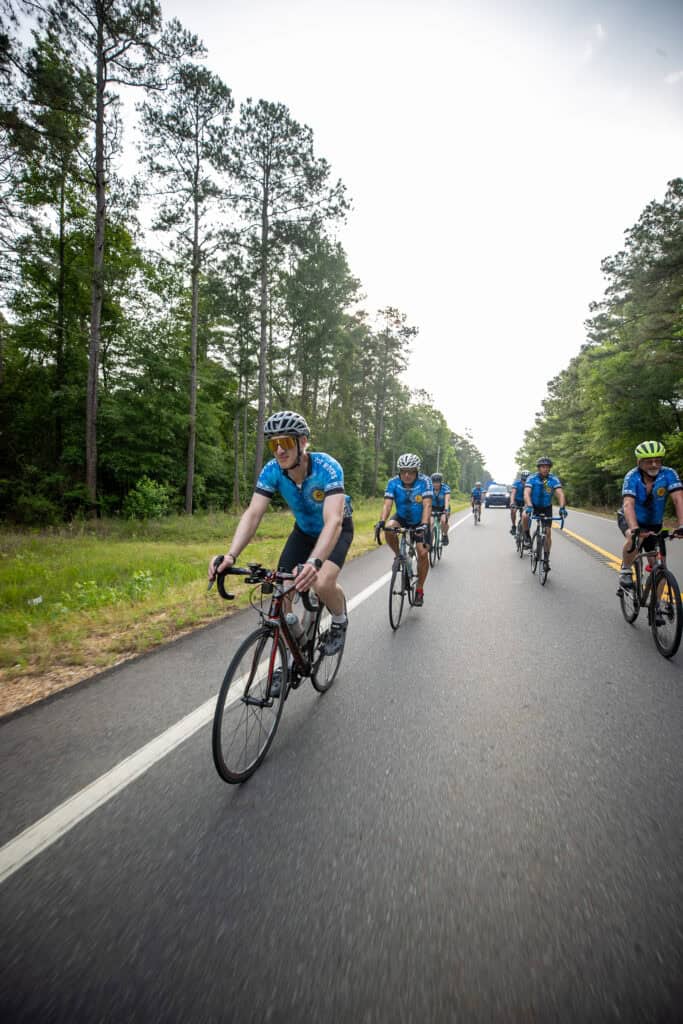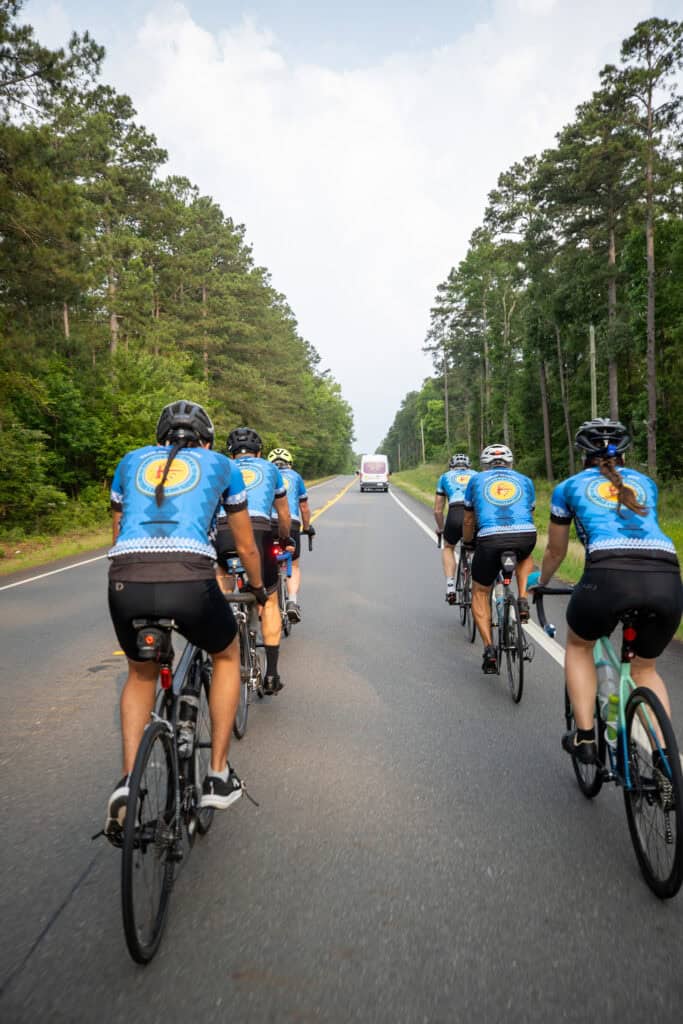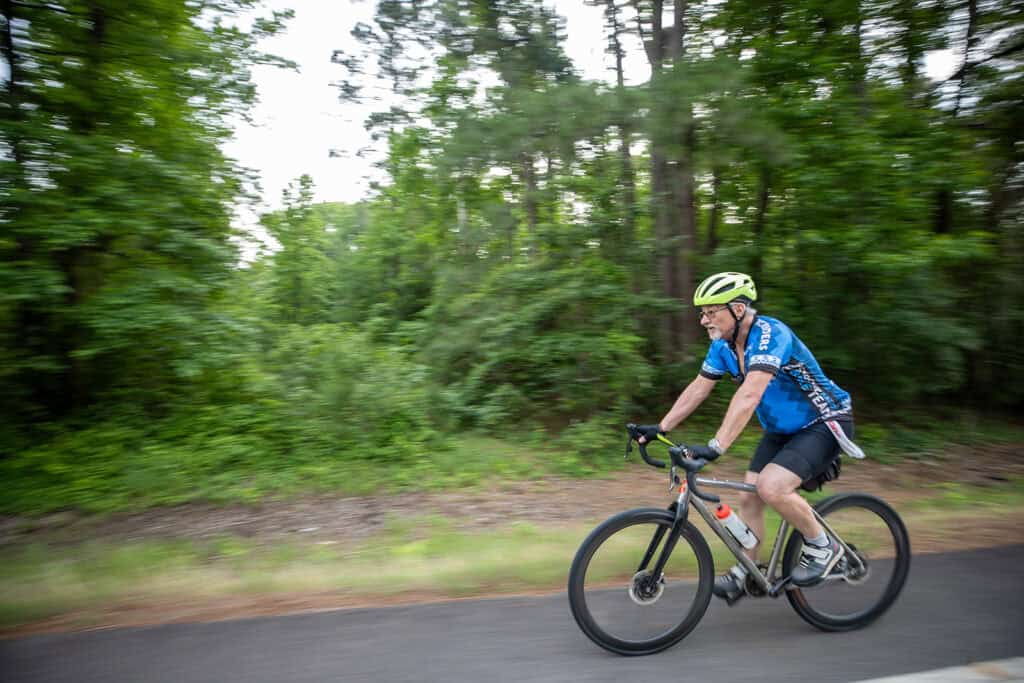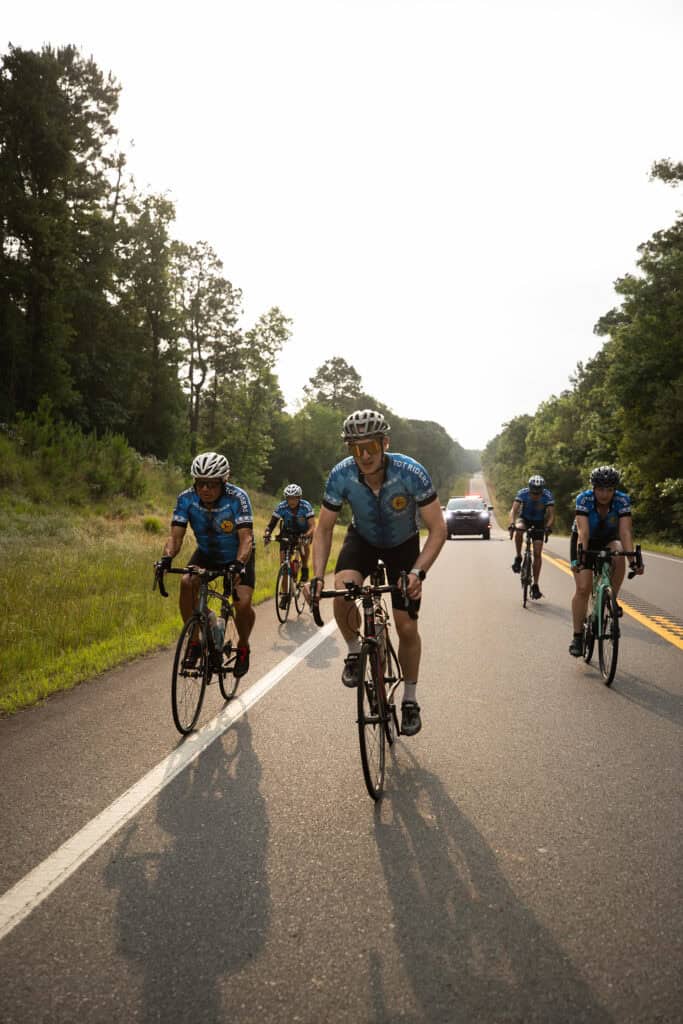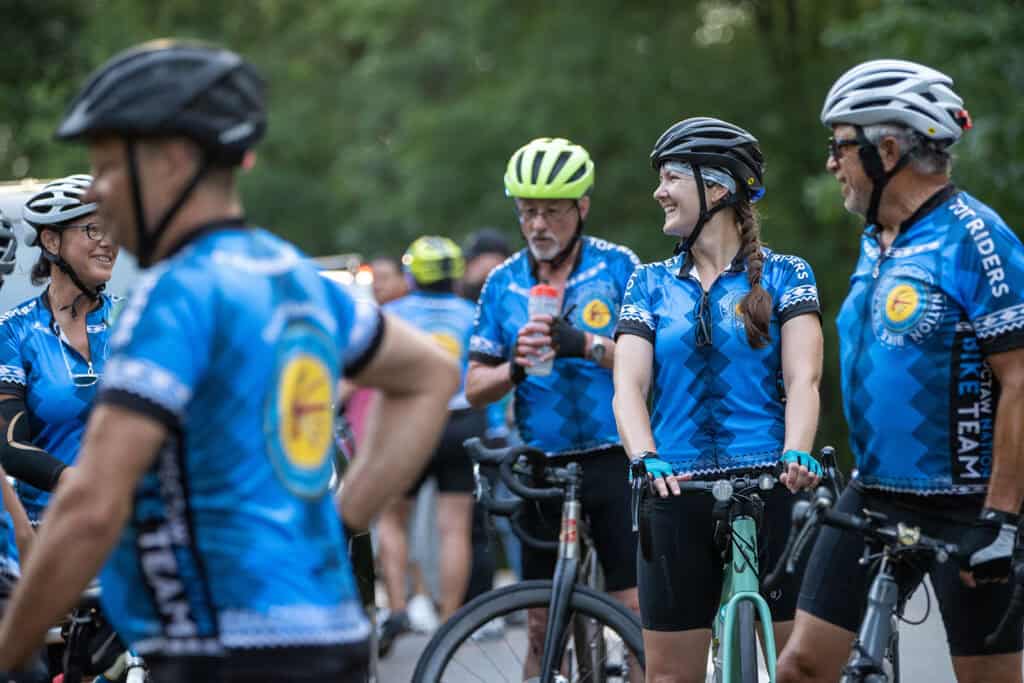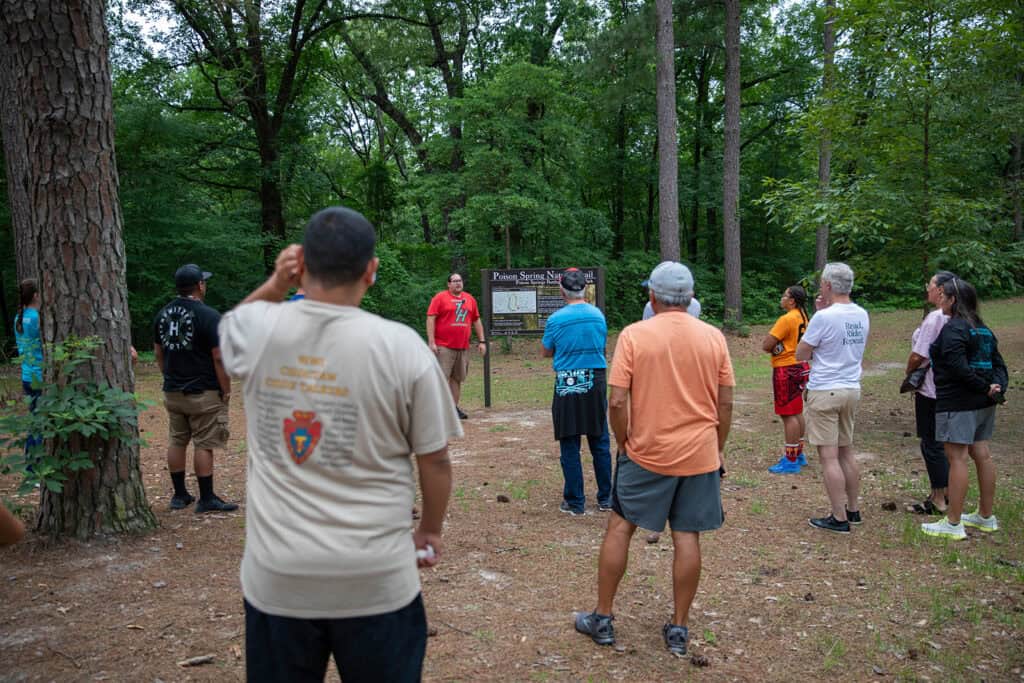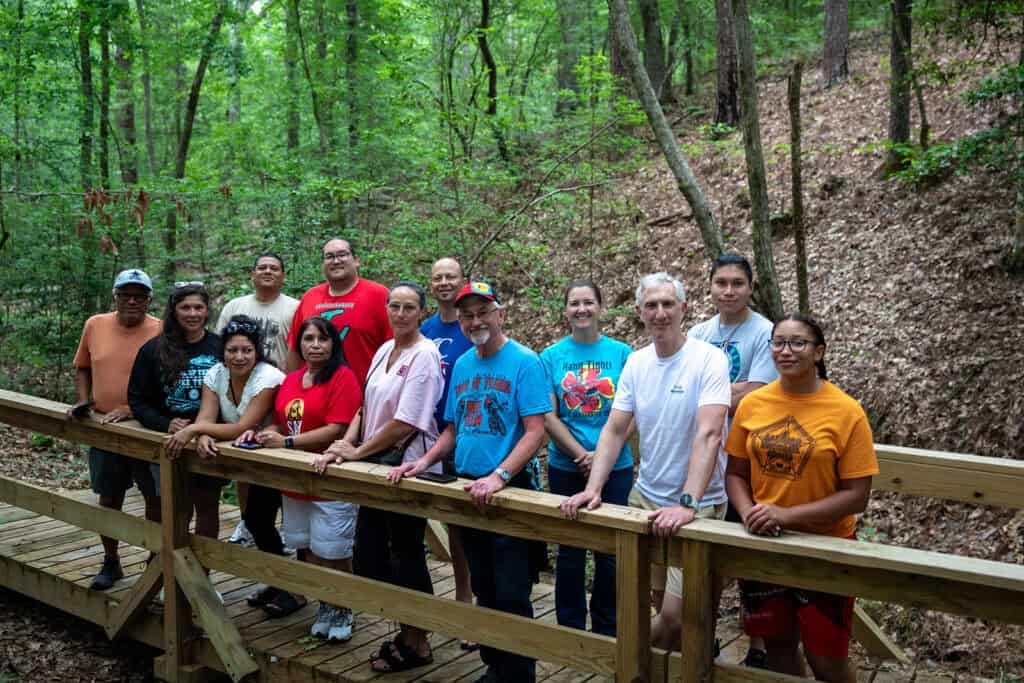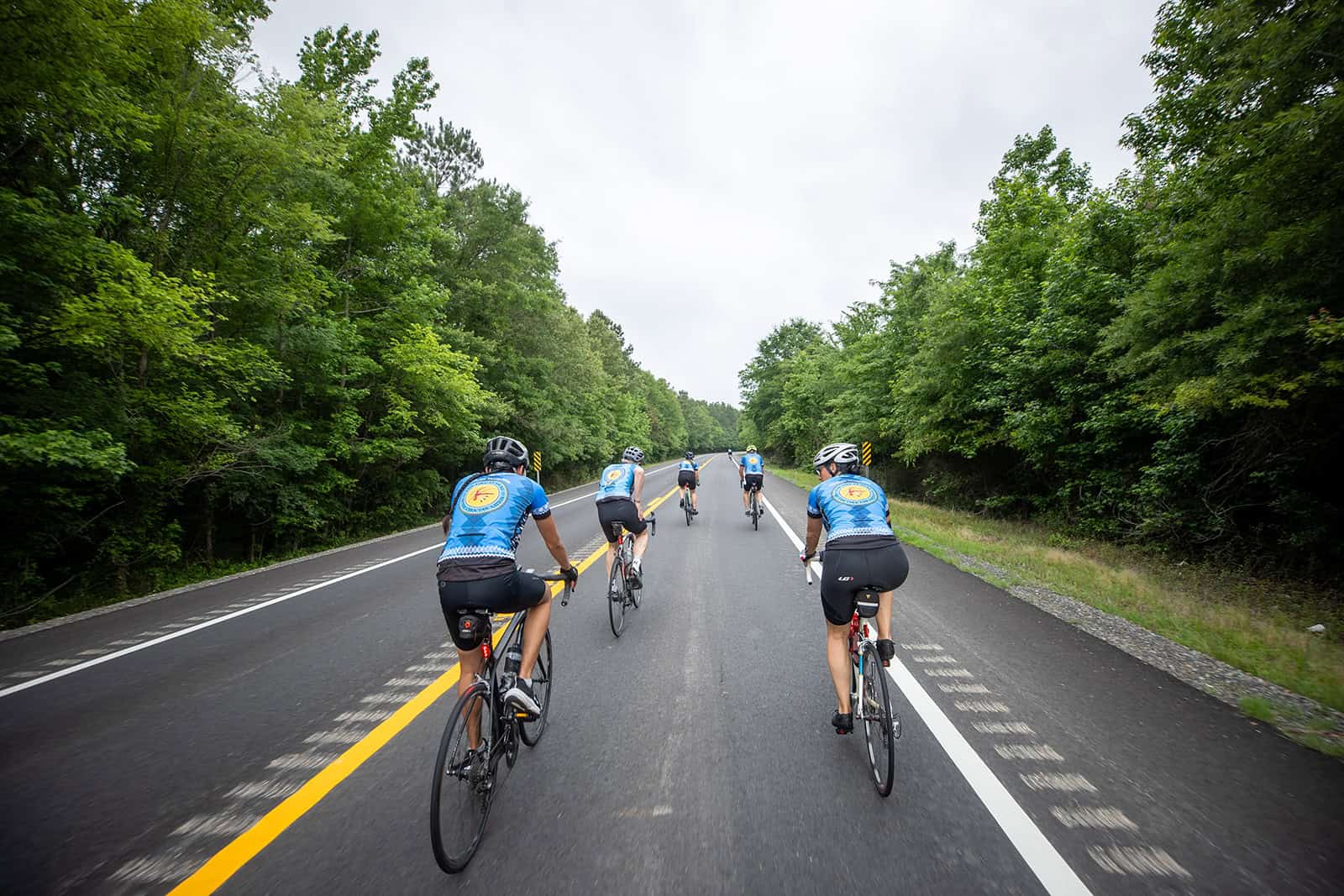Editors Note: Editors Note: In this story, Biskinik’s Christian Toews gives a special first-hand perspective of what it is like to be a part of the Choctaw Trail of Tear’s Bike Team. This year, the team once again embarked on their journey from Philadelphia, Mississippi to Durant, Oklahoma, in honor of their ancestors.
Flashes of lightning illuminate the sky over Camden, Arkansas. The alarm clock of distant thunder continues even after the riders of the 2025 Trail of Tears bike team wake up. It’s 5:30 a.m., and the support vehicles are being arranged and loaded outside the hotel. The soft “ding” of the hotel door sensor chimes rhythmically with the movement of equipment and luggage.
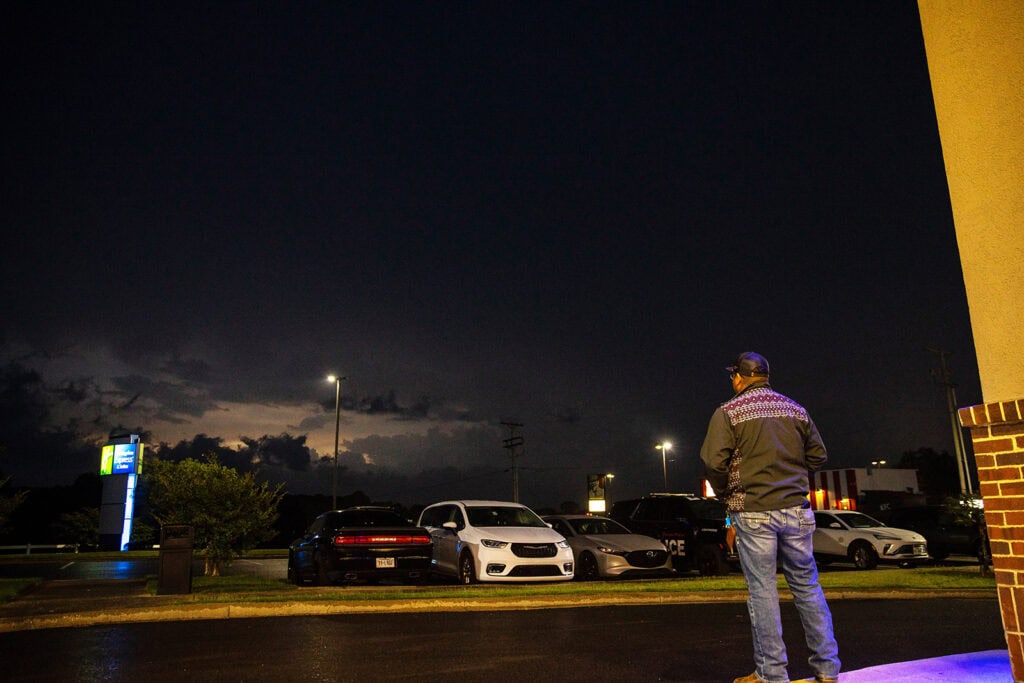
Day four of the seven-day journey begins like clockwork. As each cyclist sleepily emerges from their respective rooms, they load their bags into the trailer and then check their bicycles.
They use the pump to check their tire pressure, help each other lubricate their chains, ensure their bottles are full of water, and pack enough snacks into their cycling jerseys. All that’s left is to pedal a bike over challenging terrain in heat and humidity while hoping the rain bypasses the planned route.
Watta James, one of the support and gear crew or SAG as it’s known in the cycling world, monitors the weather to ensure a safe start for the riders. After quietly watching the sky and checking his weather apps, he says, “I think this will blow over before the start time.”
Severe storms have been in the area most of the night and, thankfully, have cleared just in time for the riders to make their day’s journey before the next wave of rain.
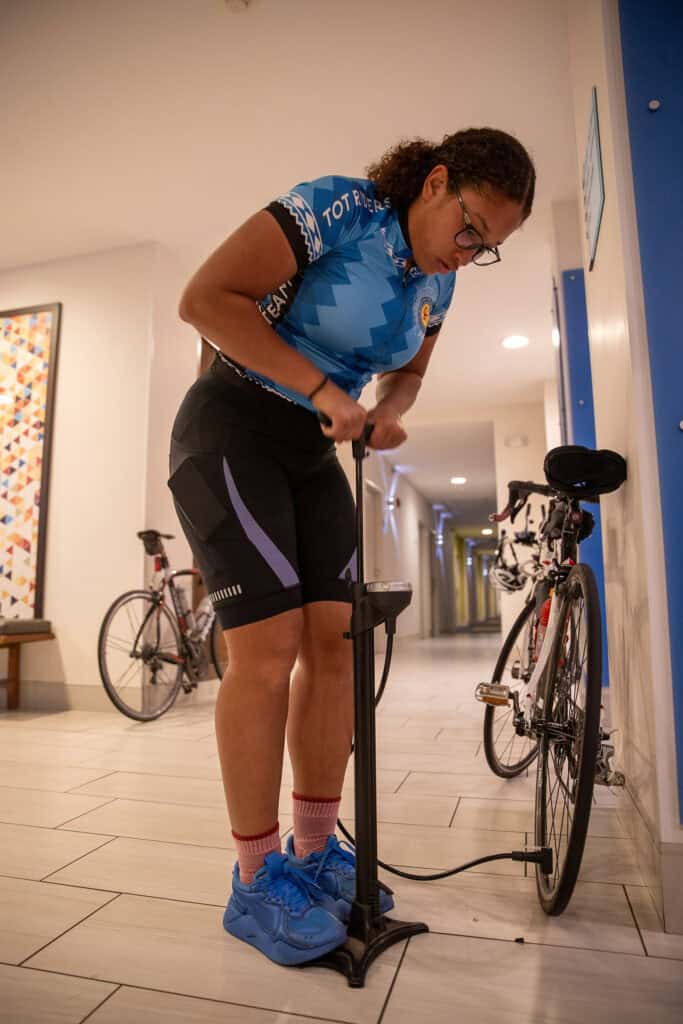
After a quick breakfast, the team gathers for a prayer and a quick meeting regarding the route for the day.
“A lot of hills,” one of the riders says hesitantly.
Daylight slowly emerges behind a cloud-covered sky, and after a final check of equipment and personnel, the riders set off. For safety, a Choctaw Lighthorse police vehicle leads the team away from the hotel, and the SAG vehicles follow them. These vehicles ensure that traffic cannot pass too closely to the riders.
These riders are taking the journey from Philadelphia, Mississippi, to Durant, Oklahoma, to retrace the Trail of Tears route that thousands of their ancestors were forced to travel from 1830 through 70 years following.
The trip allows the team to travel along the same route and the unique places along the Trail of Tears while learning more about the history of the removal.
According to Jana Boykin, one of the organizers of this year’s ride, the cycling team has existed since 2012.
“The idea started in 2011, but the first official ride was in 2012,” she said.
Boykin joined the cycling team in 2015.
According to Boykin, the team has made this journey every year except for 2020 and 2021, when the COVID-19 pandemic restricted travel.
During the 2025 ride, the riders travel around 50 to 80 miles each day, take some time to rest at their destination, and then visit a historic cultural location.
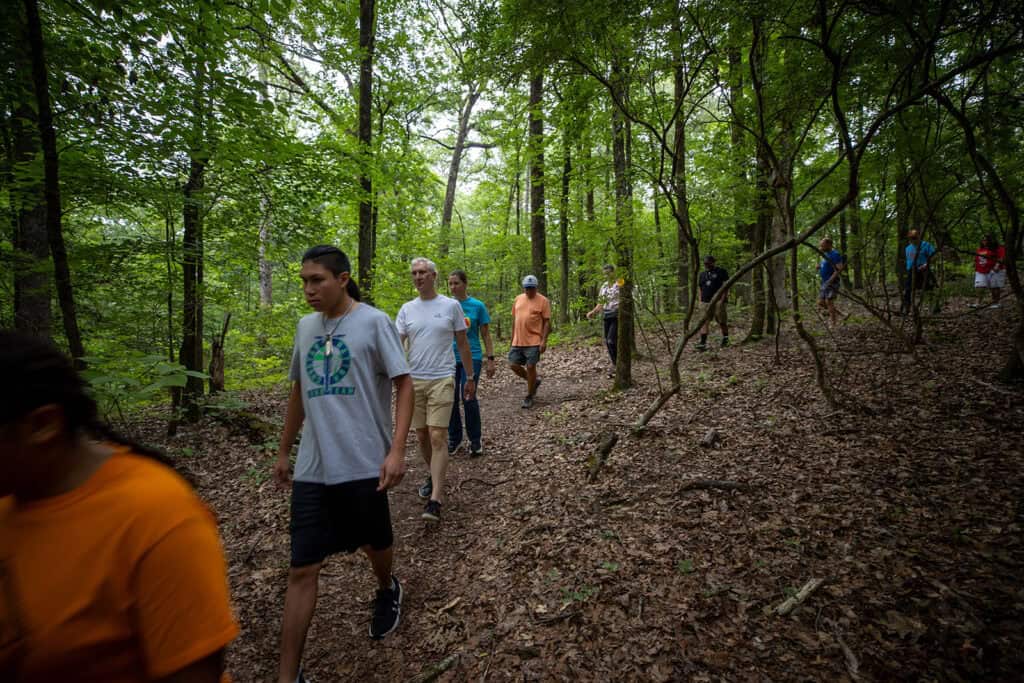
There, they learn more about the removal and history of the Choctaw tribe from Ryan Spring, who works in the cultural preservation department at the Choctaw Nation of Oklahoma.
This year, instead of the typical seven-day journey, they added another cultural day at the beginning of the ride. This time was used to visit sites around Mississippi where the Choctaw people lived before the removal. They also visited with the Mississippi Band of Choctaw Indians during their time in the state.
On the fourth day, the riders pedal toward Hope, Arkansas. Even though they start early in the morning, the humidity from the overnight storms is already bearing down on them. By 8:00 a.m., they are making good time, but all are feeling the fatigue from the previous four days in their legs.
“when it’s wet and cold, so were our ancestors, except we have a choice to go into the gas station, go into the car…we have options,”
Colt James
Colt James, the youngest on this year’s ride, lingers toward the back of the group of cyclists as the team works their way through the first 20 miles of riding for the day.
When asked about his motivation in difficult times like these, James responded, “For example, when it’s wet and cold, so were our ancestors, except we have a choice to go into the gas station, go into the car…we have options,” said James. Our ancestors didn’t have that option. Their homes were being burned down as they were leaving. They didn’t have the option to go back; they just had to keep on walking, and it’s just another cold day for us.”
Dr. Padraig Kirwan came all the way from Ireland to participate in this year’s ride. Kirwan packed his bike in a box and flew from Europe to Oklahoma. His motivation? To honor and remember the relationship between the Choctaw people and Ireland, which dates back to the 1840s, when famine swept across Ireland.
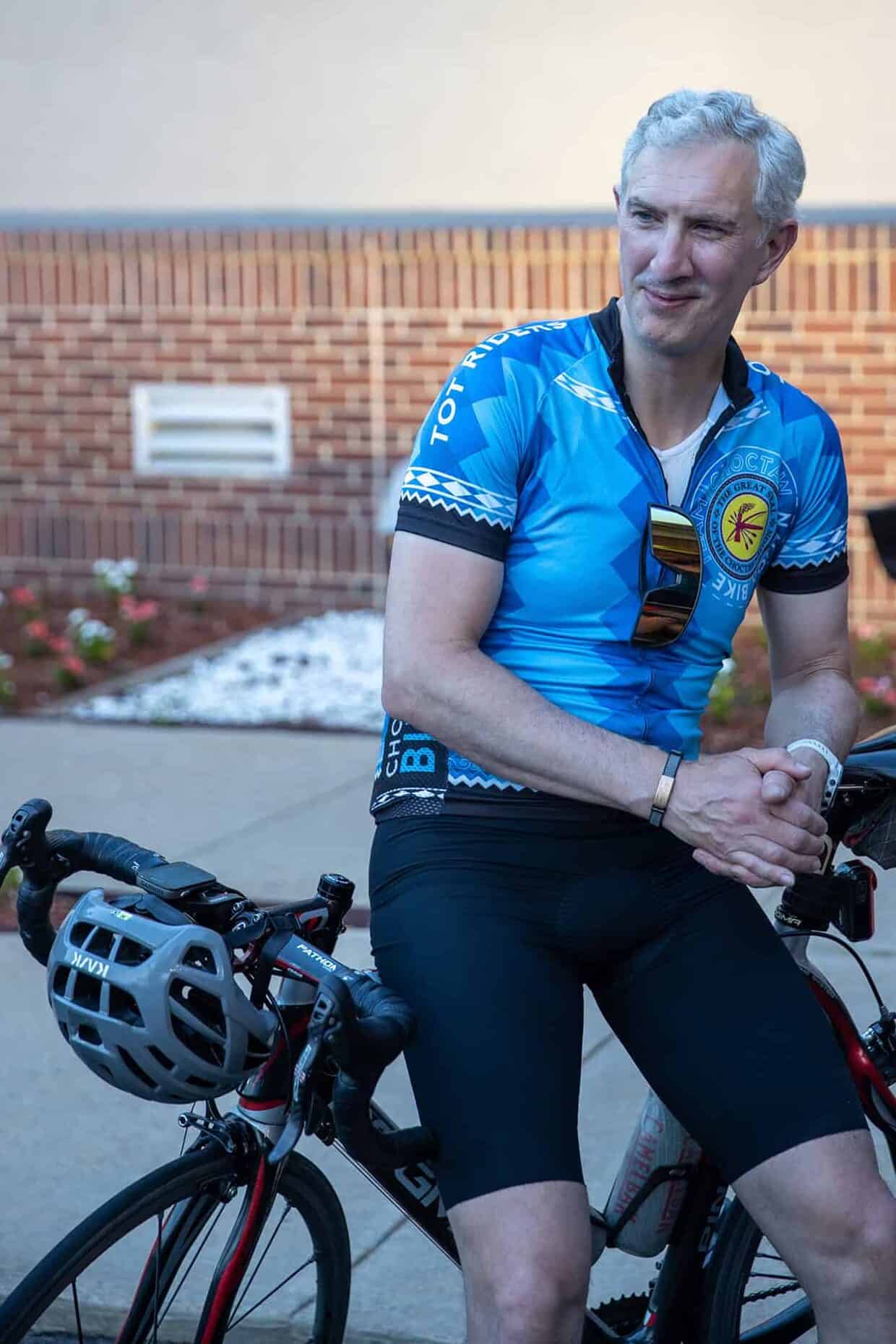
When the Choctaws, who had only recently traveled the Trail of Tears, heard about the Irish famine, they wanted to help. The Choctaw people donated $170 (over $5,000 in today’s money), which they sent to support the Irish during the Potato Famine.
“I was invited by the organizing committee to come along, and we’re honoring the gift that The Choctaw Nation sent to the islands on behalf of the people of Ireland,” Kirwan said after the ride.
However, Kirwan’s connection to the Choctaw Nation goes back much further than cycling.
He has a Ph.D. in Indigenous history and teaches in the English department at a College in London, England. He has researched and written about the Choctaw-Irish connection for nearly 14 years. That experience has connected him with many Choctaw people, which has only grown his passion and love for this relationship.
According to Kirwan, even though he knew about the Choctaw Nation, he was overwhelmed by the historical and cultural locations the team visited.
“In terms of book learning, there’s a sense you understand the history,” said Kirwan. “When you’re here, and you also see how history is fleshed out and contextualized, you see things from other perspectives.”
Kirwan has been a lifelong cyclist, and this union of sport and his passion for Choctaw history and culture was a dream opportunity for him.
“To be invited here is almost, for me, like there’s a sense of diplomacy nearly. And you know, it’s very important to help that,” said Kirwan. “Hopefully, it deepens our relationship.”
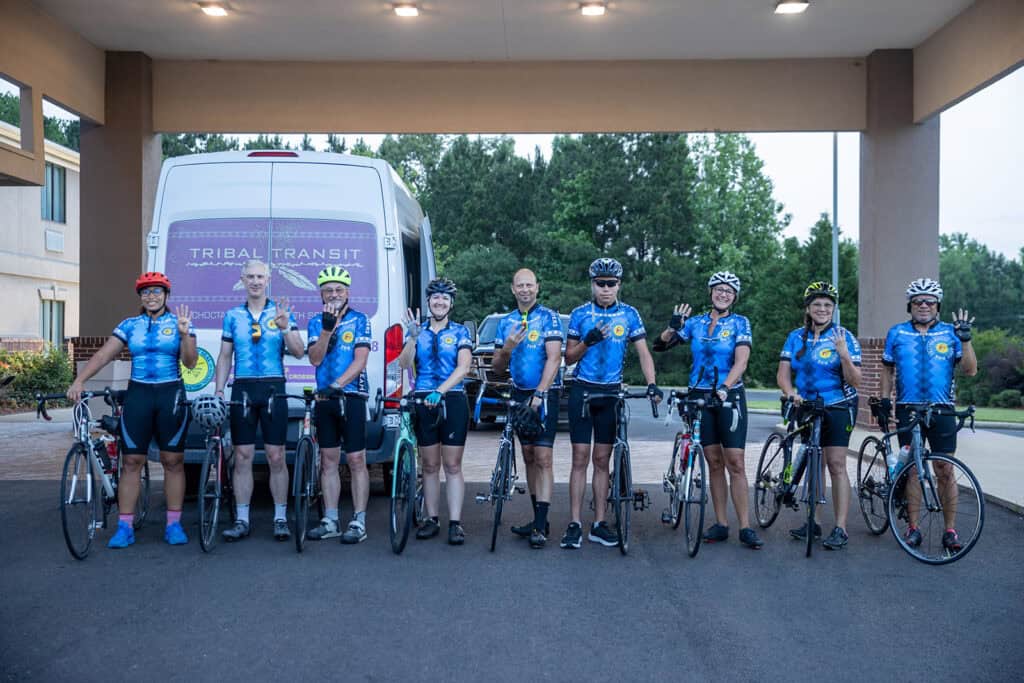
On the ride’s last day, the team sweats their way back to the Choctaw Nation headquarters in Durant, Oklahoma.
Joined by Chief Gary Batton, they are met by cheers and celebrations from friends, family, employees and the media lining the large circular drive of the headquarters.
While the cycling journey is over, the experience and knowledge gained help to preserve the memory of the Choctaw People who made this same journey years ago.
If you want to learn more about the Trail of Tears bike team, you can contact Jana Boykin at [email protected].
More Trail of Tears bike photos
